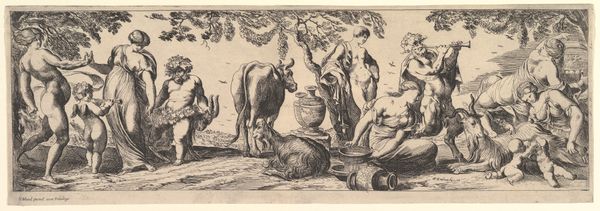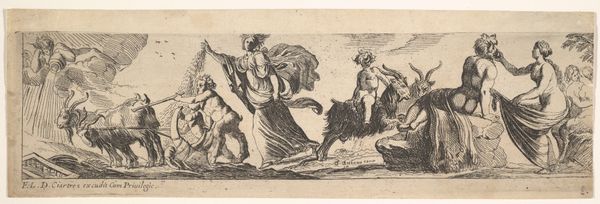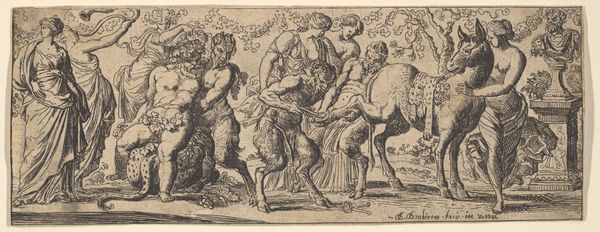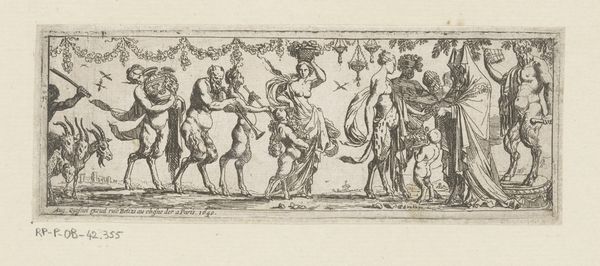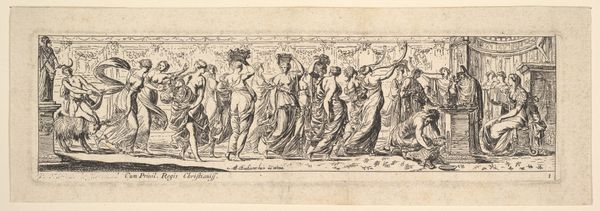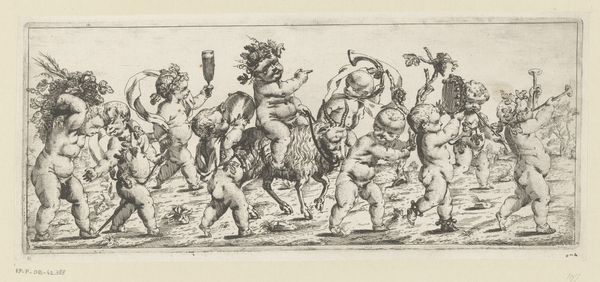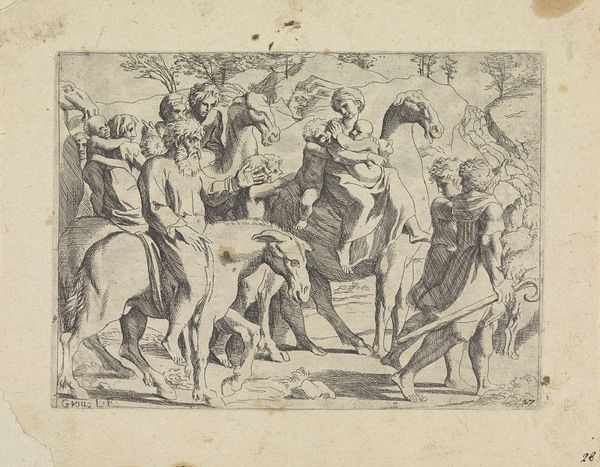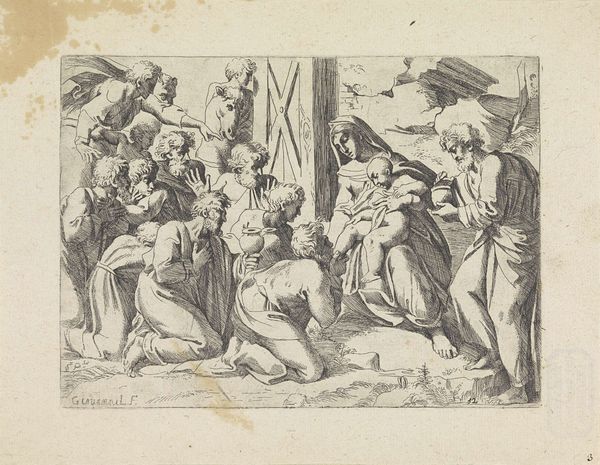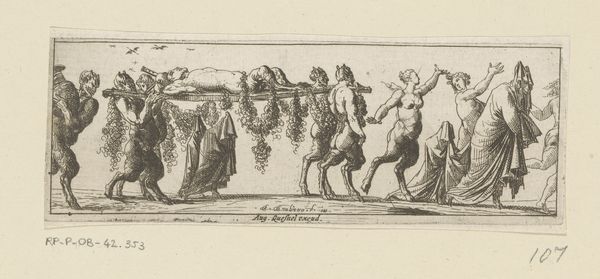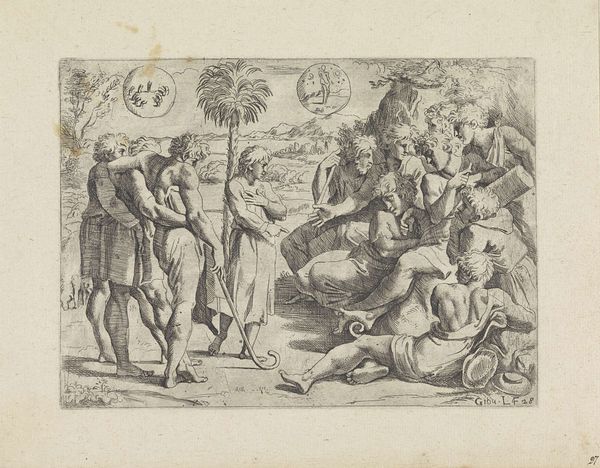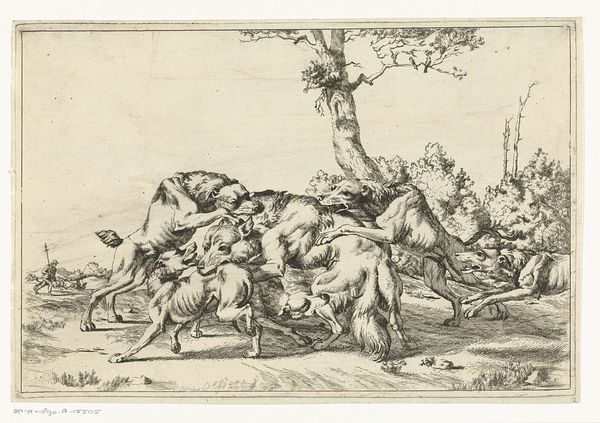
drawing, print, engraving
#
drawing
#
allegory
#
baroque
# print
#
landscape
#
figuration
#
history-painting
#
engraving
Dimensions: Sheet: 3 1/16 x 10 1/2 in. (7.7 x 26.7cm) Plate: 2 3/4 x 10 1/4 in. (7 x 26.1cm)
Copyright: Public Domain
Editor: This is Pierre Brebiette's "Bacchanal," an engraving dating from sometime between 1615 and 1642. I'm struck by the dynamic composition, all these figures seem to be in motion across the horizontal space, but I’m not quite sure what’s happening. How do you interpret this work? Curator: This engraving presents an intriguing study in line and form. Note how Brebiette employs dense, cross-hatched lines to create areas of deep shadow, contrasting sharply with the bright, un-inked paper. These contrasts define the figures, giving them volume and energy. Consider the structure, too. Is the progression from left to right narrative or merely decorative, perhaps even allegorical? Editor: I see what you mean. It does feel like a procession, or a frieze. The repetition of figures certainly lends itself to that. So you're saying the composition, how it's arranged, is the key to unlocking its meaning? Curator: Precisely. Forget about external narratives, and instead observe how Brebiette utilizes the formal elements at his disposal. For instance, consider how the drapery both reveals and conceals the forms beneath, creating tension and visual interest. What does this emphasis on drapery and anatomy tell us about the artist’s interest, his focus on the physical structure, devoid of specific references to time and place? Editor: That’s fascinating, focusing on how the piece is constructed rather than what it depicts. So the lines and forms themselves tell the story. Curator: Indeed. By focusing on the internal dynamics of the composition—the push and pull of light and shadow, the balance between movement and stillness—we arrive at a richer understanding of Brebiette’s artistic vision. Does this perhaps affect how you view narrative paintings going forward? Editor: Definitely! I am struck by how much more you can learn from observing details rather than passively absorbing its general "appearance".
Comments
No comments
Be the first to comment and join the conversation on the ultimate creative platform.


